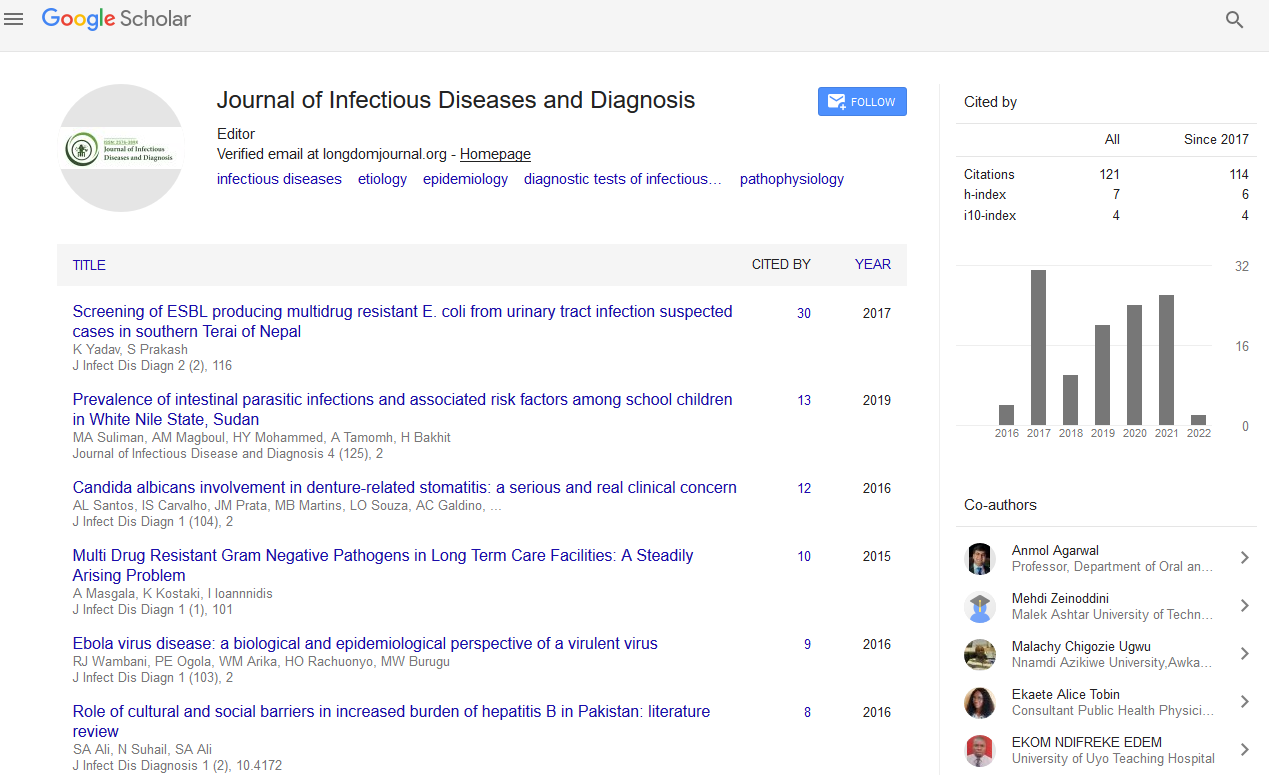Indexed In
- RefSeek
- Hamdard University
- EBSCO A-Z
- Publons
- Euro Pub
- Google Scholar
Useful Links
Share This Page
Journal Flyer

Open Access Journals
- Agri and Aquaculture
- Biochemistry
- Bioinformatics & Systems Biology
- Business & Management
- Chemistry
- Clinical Sciences
- Engineering
- Food & Nutrition
- General Science
- Genetics & Molecular Biology
- Immunology & Microbiology
- Medical Sciences
- Neuroscience & Psychology
- Nursing & Health Care
- Pharmaceutical Sciences
Abstract
Otomastoiditis: Thirteen Years of Active Surveillance in a Northern Mexican Hospital (Mexico-USA-Border): Pneumococcus as Leading Cause, and High Impact of Pneumococcal 13-Valent Conjugate Vaccine
Enrique Chacon-Cruz*, Erika Zoe Lopatynsky-Reyes, Rosa Maria Rivas-Landeros and Luis Antonio Zapata-Cosain
Background: We have published several studies related to Invasive Pneumococcal Disease, and effectiveness of Pneumococcal Conjugate Vaccines: 7-valent (PCV7) and 13-valent (PCV13). This is the first Latin American, prospective study looking for Otomastoiditis (OM) in children, and the impact of PCV13 on this disease. Methods: Since October/1st/2005 until September/30th/2017, prospective surveillance to identify all children<16 years old with OM at the Tijuana, Mexico, General Hospital was performed. OM was diagnosed with otoscopy, and tomographic signs of OM. Bacterial identification was obtained either from mastoids and/or supramastoid abscesses, and bacterial identification by conventional cultures. Pneumococcal serotyping was performed by the Quellung Reaction (Statens Serum Institute®). Results: Twenty cases of OM were identified. Median age at admission was 32 months (6 months–15 years). Median hospitalization days of 10 (5–115). Mastoidectomy was performed in all. Bacterial isolation was successful in 18 (85.7%). S. pneumoniae was isolated in 14 (77.77%). For Pneumococcal OM: before PCV7 introduction (19 months of surveillance) there were 0.158 cases per month (6A, 18C, 7F, one of each), post-PCV7 universal vaccination (61 months of surveillance) decreased to 0.114 cases per month (serotypes 19A(3), 3(2), 7F(1), 12F(1), PCV7 impact of 27.8%), and following PCV13 implementation (76 months of surveillance) dropped to 0.052 cases per month (serotypes 3(1), 33F(1), 35B(1), 24F(1), PCV13 impact of 67%), with no cases of S. pneumoniae serotype 19A following PCV13. Conclusion: Although relatively uncommon, OM was associated with important morbidity (mastoidectomy) and long hospitalization. S. pneumoniae was the leading cause, with high impact of PCV13 (67%), and a possible disappearance of serotype 19A
Published Date: 2019-09-12; Received Date: 2019-08-26


